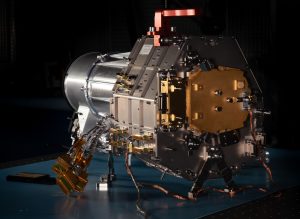JANUS was selected by the European Space Agency (ESA) in February 2013 through an international open call for the JUICE scientific payload. The instrument was developed by a collaborative international team led by an Italian Principal Investigator, alongside contributions from institutions in Germany, Spain (IAA-CSIC), and the UK, including prominent research entities across Europe, Israel, Japan, and the USA.

The JANUS instrument (Jovis, Amorum ac Natorum Undique Scrutator) is a multispectral camera integrated into the JUpiter ICy moons Explorer (JUICE) mission, operating within a wavelength range of 380 to 1080 nanometers. It is designed to meet the imaging requirements for various targets in the Jupiter system, including its icy satellites, Io, smaller moons, rings, and Jupiter itself. The orbital trajectory of JUICE allows for observations at distances ranging from a few hundred kilometres to over several hundred thousand kilometres, enabling spatial resolutions from 3 meters to several kilometres per pixel.
JANUS features thirteen bandpass filters with bandwidths varying from tens of nanometers to as low as 10 nanometers, providing extensive spectral coverage. This spectral resolution will facilitate unprecedented analysis of geological processes on icy satellites, monitoring of volcanic activity on Io, and exploration of the properties of small moons and rings. Additionally, it will enhance understanding of Jupiter’s atmospheric dynamics over an operational period exceeding three years.
The outer solar system’s moons offer insights into the formation and evolution of giant planets, harbour conditions possibly suitable for life, and demonstrate astrobiological potential through the existence of subglacial oceans and organic chemistry. The JUICE mission aims to elucidate the formation conditions and evolutionary paths of icy moons, while also characterizing interactions within the Jupiter system. The instrument’s design allows it to fulfil a wide range of observational objectives defined by the JUICE science requirements. At the same time, its operational capabilities have been tailored for diverse targets and conditions.
The JANUS design and capabilities, detailed descriptions of subsystems, an outline of integration activities and performance verification through dedicated testing, and a summary of the expected radiometric performance across different targets can be found in a recent publication jointly co-authored by several members of SCITECHSS.
